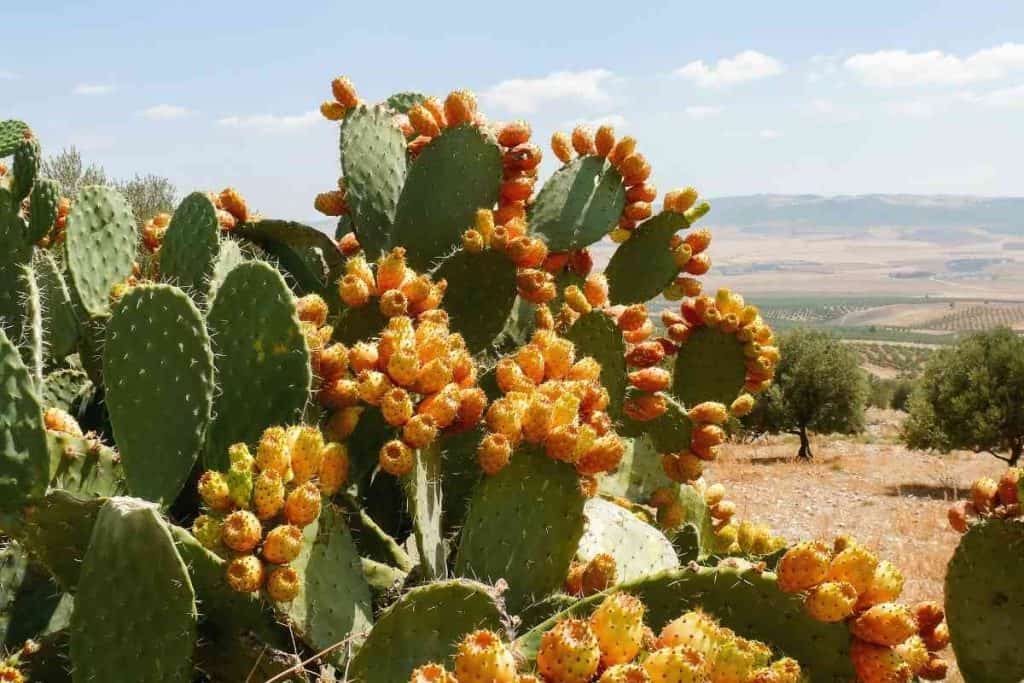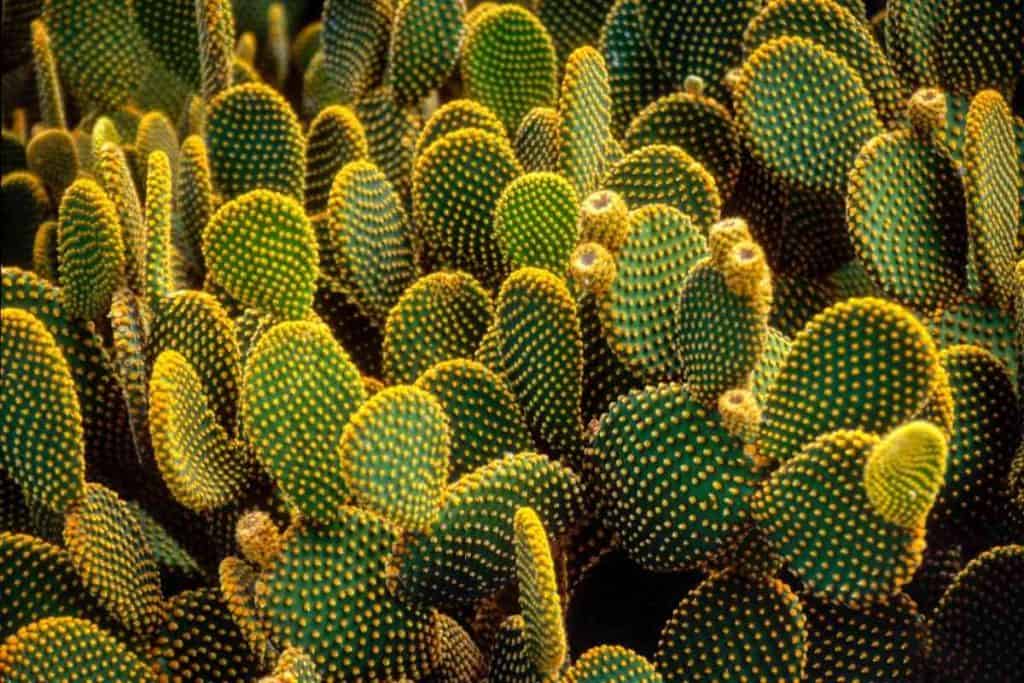The Cactus is among the most well-known plants on the planet. They are popular because they are one-of-a-kind and often wonderfully colored and rugged.
Notwithstanding their popularity, they can be impossible to care for. It's not unusual for a cactus to turn yellow, especially if it's developed in a climate that is too dry or has insufficient illumination. But why is my cactus turning yellow?
Cactus turns yellow for various reasons, which can include improper watering, temperature variation, poor nutrition concentration in the soil, diseases, pests, etc.
It's critical to determine what's causing your cactus plant to yellow before treating it, and that is precisely what this article will help you with.
Let's get started!
Table of Contents
Why Is My Cactus Turning Yellow?

The following are the most common causes of a cactus plant turning yellow:
1. Overwatering
If the Cactus turns yellow from the bottom rather than the top, the situation is usually more severe. This phenomenon is primarily triggered by excessive moisture and root rot. You notice yellowing at the plant's base quickly spreads to the pinnacle.
Overwatering is frequently the cause of a cactus having turned yellow. Cacti require irrigation on occasion but should be irrigated no more than once per week in most instances.
Overwatering your plant will cause it to turn yellow (sometimes with brown spots on the edges) and ultimately die.
When pressed, the plant will become soft and pliable. These are root rot symptoms that make it more challenging to treat and save the plant. The plant may have remained slightly damp for too long due to too much water or the soil not drying quickly.
Make sure there are no permanent pools from around the roots of the plants or pots, as this could give rise to overwatering issues such as root rot or stem decay.
See Also: Why is My Succulent Dying?
2. Diseases
A yellowing cactus is a symptom of a variety of diseases.
Cephaleuros wilt is a prevalent fungal disease caused by phytophthora Verticillium dahlias that can induce this symptom (Vd).
The plant's water-conducting cells die due to the infectious disease, and it loses its capacity to transfer water throughout the entirety of its body. Yellow may also be caused by symptoms of other illnesses, such as chlorosis.
Cacti and succulents are usually affected by chlorosis or iron deficiency because they soak up so few nutrients from their surroundings.
You may realize your plant is starting to turn a milder green overall with splodges of light browns when this occurs.
3. Pests
One of the most likely causes a cactus turns yellow is because pests have attacked it.
Typically, insects like mealybugs or spider mites have established massive numbers on the leaf and squeeze all of the nutrient content out of its yellow leaves.
4. Poor Nutritional Concentration in the Soil
If you develop your cactus plant in a pot with poor soil and minimal nutritional content, it will turn yellow.
Cacti demand substantial, highly porous soil that is concentrated enough to retain water but not so tightly packed that the plant becomes top-heavy or falls over when soaked.
5. Temperature Variation
Temperature fluctuations are among the most likely reasons for cactus yellowing.
They can be induced by relocating it from one spot to another and then putting it near anything that generates a lot of heat, such as an oven vent or a heater.
If you haven't relocated your plant in a while and the temperature in its present position has advanced dramatically, this could be why it's turning yellow.
To keep a cactus from turning yellow due to temperature changes, relocate it to its new location gradually over a few days.
6. Little or no water in the plant and soil
When a cactus turns yellow due to abrupt shifts in its surroundings, it can take some time to recuperate.
You could perhaps wait until the color comes back before soaking or fertilizing again in this scenario. Or else, root rot could occur if moisture was imposed too soon after the changes in temperature while remaining at high temperatures.
7. Insufficient water supply during warm temperatures or water shortages
When a cactus does not get enough water, it turns yellow.
This yellowness can be caused by excessive sunlight, drought conditions, or simply leaving the plant in a pot for a few days straight without soaking at all.
See Also: Why Lucky Bamboo Tree Is Turning Yellow
How to Treat Yellowing in Cactus Plants

Disease
Diseased cacti will die if left untreated for an extended period.
The answer is to report them into undisturbed soil, which will provide them with new nutrient content and improved drainage channels. Then, snip off any fallen root systems with scissors or pruning sheers and provide more than enough bright sun straight away!
Pests
To prevent this, inspect your plants frequently for indications of a pest infestation–a small amount can inevitably develop into a substantial quantity before you know it!
Most notably, remove any dying matter around and sometimes near your plant so that it does not use it as a food source. The presence of decaying organic matter will only entice more infestations.
If you discover an infection, the best treatment we've found is neem oil.
Spray it on the plant and rub it in thoroughly to remove any white traces. It doesn't smell nice, but it produces excellent outcomes!
Poor Soil
Potting soil mixes made especially for cacti (succulent/cactus soil) are usually strongly advisable because they constitute extra nutrients such as iron and calcium, vital for proper development.
Temperature Fluctuations
You can keep a cactus from turning yellow due to sudden temperature changes by relocating it progressively.
Little or no water
You should provide a more familiar and comprehensive water supply until the soil becomes humid again to resolve this issue.
Frequently Asked Questions
Can a yellow cactus revert to green?
Your Cactus will start turning yellow to display its strain when this occurs. After dealing with the infestations, your plant should return to its natural green color.
How do you care for yellow Cactus?
When a cactus fails to get enough water, it turns yellow. The color change can be due to excessive sunlight, dry spells, or simply leaving the plant in a pot for a few days without hydrating. You should provide more regular and vigorous irrigation until the soil becomes moist again to resolve this issue.
How frequently should a cactus be watered?
Most horticulturists recommend watering a cactus once a week in the hottest months. In most case scenarios, this is the ideal amount of moisture to provide without allowing much water to stay in the soil and drench the roots. When it's time to water, make sure the soil is completely saturated.
Is it possible to save a yellowing cactus?
Before watering again, the top bit of soil must feel dry. Offer the plant more than enough light, but don't overdo it. The plant is often farther gone to be saved, so there is nothing you can do. There isn't much you could do to save the plant once the complete plant has become soggy.
Conclusion
As you can see, the answer for "why is my cactus turning yellow?" could be for various reasons.
To figure out why you must examine the Cactus and its surroundings.
When it arrives to why your Cactus is attempting to turn yellow, the critical point to remember is that you are not giving your Cactus the proper care.
If your Cactus begins to turn yellow, you should first figure out what you're doing bad.




